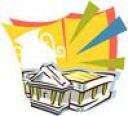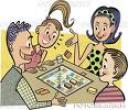
ΛΑΟΓΡΑΦΙΚΟ ΜΟΥΣΕΙΟ ΦΘΙΩΤΙΔΑΣ
από τους μαθητές της ΣΤ’ τάξης
Στις 25 Νοεμβρίου, εμείς, τα παιδιά της ΣΤ’ τάξης του 1ου Δημοτικού Σχολείου Αλμυρού, επισκεφτήκαμε το Λαογραφικό Μουσείο Φθιώτιδας στη Λαμία, στα πλαίσια του προγράμματος «Γνωριμία με τα παραδοσιακά επαγγέλματα.
Η ξεναγός, αφιέρωσε χρόνο για να μας δείξει και να μας πληροφορήσει για το Μουσείο. Μας μίλησε για το έτος ίδρυσής του, που είναι το 1984. Μας είπε ότι ανήκει στο Δήμο Λαμίας και έχει δημιουργηθεί από την ανάγκη να δει ο κόσμος αντικείμενα παλαιότερων χρόνων, καθώς επίσης γιατί έπρεπε αυτά να συντηρηθούν.
Εκεί, είδαμε μερικά επαγγέλματα που τώρα πλέον δεν υπάρχουν, όπως: ο λούστρος, ο σαμαράς, ο βαρελοποιός, ο βοσκός, ο τσαγκάρης, κ.α. Η κυρία που μας ξενάγησε, μας ενημέρωσε ότι υπάρχουν αυτή τη στιγμή 1400 παλαιά αντικείμενα. Στο Μουσείο εργάζεται επίσης και συντηρητής έργων τέχνης που βοηθά στη σωστή συντήρηση των αντικειμένων σε περίπτωση αλλοίωσης.
Οι περισσότερες επισκέψεις στο Μουσείο πραγματοποιούνται κυρίως από σχολεία, περαστικούς και, την καλοκαιρινή περίοδο, από τουρίστες.
Ευχαριστούμε την ξεναγό που μας έδωσε μια γεύση από την παλιά εποχή και σας προτείνουμε να το επισκεφτείτε.
Από το φυλλάδιο του Μουσείου:
Τhe Municipality of Lamia has founded the “Folklore Museum” of Fthiotida, in 1984. The “Women’s Society for the Improvement of the En¬vironment and Culture” of Lamia, insistent in that direction, in order to create an organization, that would collect, catego¬rize, restore, conserve and exhibit the materialistic ev¬idence of the traditional civilization of Lamia and Fthi¬otida in general. The Municipality of Lamia assisted this effort of individuals and as a result the Folklore Muse¬um was founded.
Nowadays the museum is housed in a newly built, four-storied building, financed by the municipality of Lamia in Kaliva – Bakogianni pedestrian road that leads to the historical “Laou” square. The exhibits (arts and crafts productions, rural fife and stockbreeding, costumes, jewelry, weaving, housing e.t.c.) are dis¬played on the first and second floor of the building. 1300 items are exhibited in the museum which come from donations by citizens of the region. We are deeply indebted to those people since it was due to them that a great part of our tradition has been con¬served.
The 3rd floor of the building houses a conference room and a small library with folklore and historic books. Our effort of making known the folklore culture of the region led us to the publication of several books that are available in the museum. The books are “Tra¬ditional Recipes of Roumeli”, “Folklore of Fthiotida” and “Greek traditional tastes in Lamia”.









